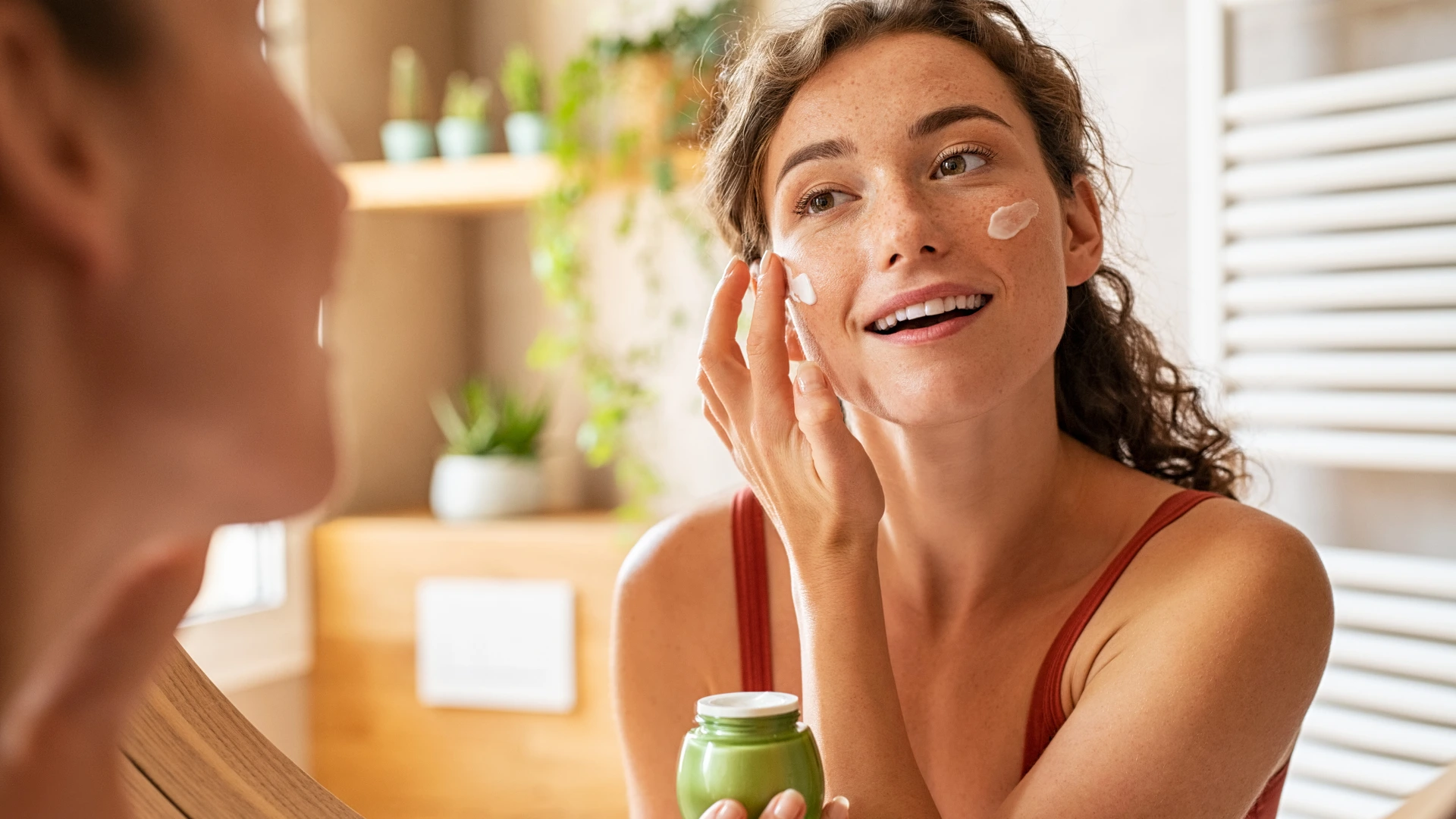
Introduction : skin routine morning is not just about wash your face, moisturize, controlling the skin problem you may have, protect your skin to face rough elements such as weather and pollution. There are some basic that will always be part of a skincare basal: cleanser, moisturizer and sunscreen.
Some additional products can actually do it to really improve your type of skin — dryness, oiliness, age related wrinkles, or acne. In the morning facial skin care includes facial wash, toner, lightweight moisturizer and sunscreen in the morning. At night, wash over again, use serum or treatment, apply a hydrating moisturizer and eye cream for zone-specific treatment.
Start by washing your face with a cleanser to remove dirt and oils
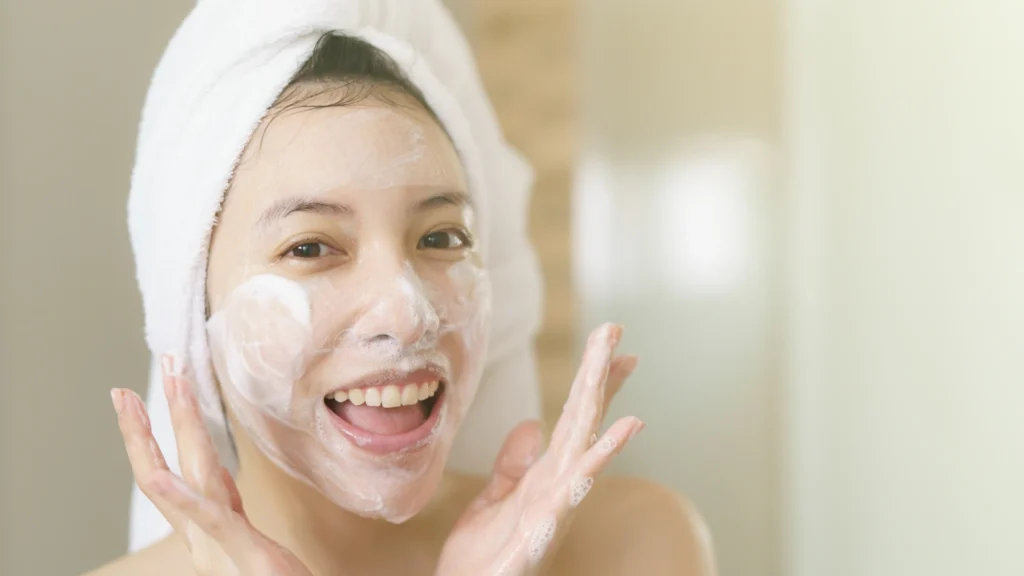
The first thing to do is to wash your face with some cleanser, gently, to clean off overnight rubbish such as dirt, oils or impurities. It refreshes your skin to allow all the products that will be applied to you after the cleansing process is done to be your regular partner. Use a cleanser suitable for your kind of skin: dry, oily, or sensitive.
First things first, morning is the most important part of your routine to clean your skin. It’s a win how your moisturizer and sunscreen can penetrate deep into your skin well and keep your skin hydrated and protected for the day.
The dry skin morning routine takes care of the skin’s health and conditions it prior to the day.
Step 1: Cleanser
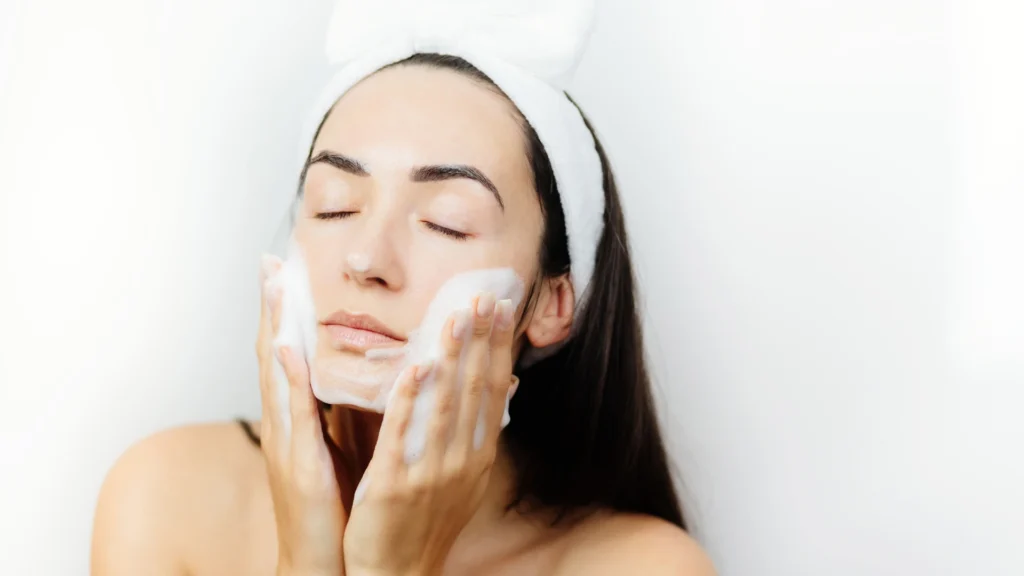
When you’re starting that morning skincare routine, make sure to select the right cleaner. There are a few points of consideration:
Skin Type Determine your skin type: What is your skin oily, dry, combination or even sensitive? But first, look for the cleanser that does what you need from it. Gel cleansers are best suited for people with oily skin while, cream cleansers are designed especially for the dry skin.
Ingredients: You start with good ingredients, soothing and non irritant. A salicylic acid or benzoyl peroxide based cleanser may help acne prone skin. Choose fragrance free and hypoallergenic if you have sensitive skin.
pH Balance: The best cleansing product that will not break the natural barrier of the skin is a pH balanced product so no dryness or irritation should occur.
Application: glowing skin morning routine and the cleanser smear pretty much around the face. Massage gently. For about 30 seconds dab the product outwards in circular movements from shoulder to shoulder. And make sure to rinse off, and blot dry with a clean towel.
Recommended Cleansers
If you are lucky to have dry and skin care in morning they put ceramides and hyaluronic acid into it. Neutrogena Oil-Free Acne Wash: This one is for acne, oily skin types, and the product has salicylic acid on it.
La Roche-Posay Toleriane Hydrating Gentle Cleanser: The mostly used lovely hydrating cleanser with calming sensitive skin benefits.
The key aid with a help against redness is included in the Aveeno Ultra-Calming Foaming Cleanser which is very effective for sensitive skin.
Step 2: Toner
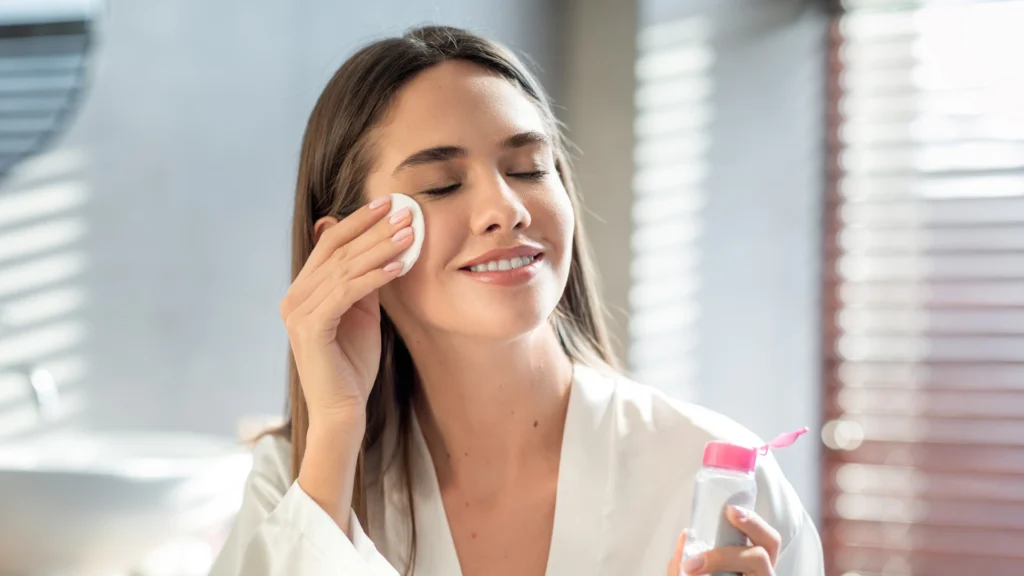
Toners are one of the essential elements in your routine morning routine for skin whitening they neutralize your skin’s acidity, wash off the remainder of grime and give a better surface on which the surface products can be applied. Let’s zoom in further on the benefits and how to use toner
Purpose: Toners minimize pores, wake up the skin, and allow for an added amount of hydration. Frequently applied makeup as well as cleanser can also be washed off every time you are washing your face.
Ingredients: It will be appropriate to opt for formulations that do not contain alcohol in order to avoid damaging your skin. Some other good ingredients include:
Witch Hazel: This substance has an inherent ability to reduce inflammation while at the same time shrink the pore size.
Rose Water: It is a healthy skin pampering lotion that can only be used, and very suitable for those of sensitive skin. Small glass of water is filling, also helps with temper.
For the oily skin or for someone who develops a pimple or acne easily, the Glycolic Acid or Salicylic Acid serves as an additional aid in removing the next succeeding pimple or the formation of pimple.
Apply: After washing your face with a mild facial wash, take a cotton pad and damp it with the toner, then spread the toner all over your face and neck using only the cotton pad or gently nursing your face and neck with your fingertips. The important thing is not to bring it too close to your eyes photography. It’d be wise to wait until this portion is absorbed before applying serums or your moisturizer.
Recommended Toners
Thayers Witch Hazel Toner : uses aloe vera and is free from alcohol to ensure the skins wellness thus the groomed skin will be prepared to receive face care products.
Paula’s Choice Skin Balancing Pore-Reducing Toner: In fact, this toner is appropriate for combination to oily skinned people. Heads moisturizer and pH balance Paula to help regulate the skin’s pores.
Kiehl’s Calendula Herbal Extract Alcohol-Free Toner: A perfect toner, gentle on the skin and has a mixture of calendula petals; makes the skin feeling silky not that sticky or tacky.
Facial Spray with Aloe, Herbs and Rosewater by Mario Badescu: An invigorating and revitalizing water base formula that will help to maintain the skin’s moisture in the course of the day.
Step 3: Exfoliator
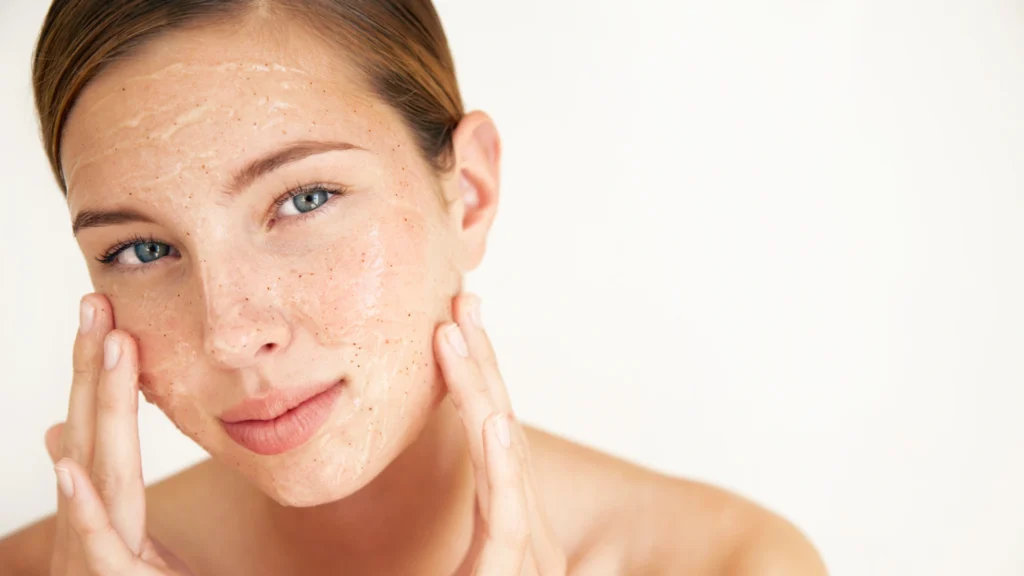
Exfoliation is one of those things that everyone should do in the morning, at least 2-3 times a week depending on skin type and its sensitivity. It is a process that assists in the elimination of such pale skin cells, to unclog pores, and make the skin shed dead cells, somewhat forcefully, to impart a fresh smooth and glowing skin.
Benefits of exfoliation Remove dead skin cells: It removes dead skin cells on the outer surface of the skin hence making one’s skin not to be bright and nice.
Opens pores: Daily exfoliating in a way that presents minimum harm is beneficial as it decreases the chances of blocked pores and therefore little chance of developing pimples and blackheads.
Improves Product Absorption: Gently rubbing the skin to remove the debris clears out a layer that creams and serums cannot penetrate beyond. Helps improve cell replacement It is thought that exfoliating actually promotes increase in cell division on skin and in future, should improve the skin’s character and quality.
Tips for skincare routine
Based on your skin’s tolerance, use an exfoliator 2-3 times a week. When you over exfoliate, irritation can occur.
Gentle Technique: If using a physical exfoliator, use hands to apply trick on face in circular motions, not too much pressure.
Follow Up: If you exfoliate, you need to moisturize after, to keep the skin hydrated.
Step 4: Serum
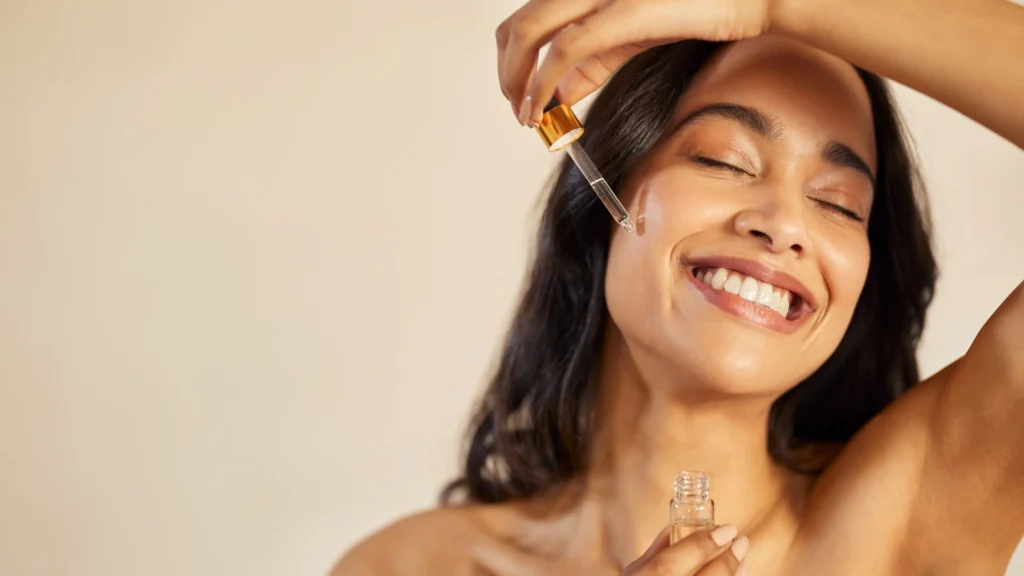
Serums are highly concentrated, fast absorbing formulations that are intended for exactly what their name implies to target specific skin concerns like hydration, anti ageing etc. Here’s how to effectively incorporate a serum into your morning skincare routine
Benefits of Using a Serum
High Concentration of Active Ingredients: Regular moisturizers have low concentration of active ingredients in their composition, and therefore, they are not sufficient to deal with certain skin troubles,while serums are highly concentrated with active ingredients.
Targeted Treatment: Fine lines, dark spot
dehydration: there’s a serum that’s formulated to address your skin’s issues
Lightweight Texture: All serum has a lightweight fast absorbing texture, which penetrates deep into the skin to avoid leaving a heavy feeling.
Types of Serums
Hydrating Serums: Hydraquent contains hyaluronic acid or glycerin to raise the moisture levels. Example: Hyaluronic Acid 2% + B5 by The Ordinary
Brightening Serums: With vitamin C or niacinamide to even skin tone and help abolish dark spots. Example: TruSkin Vitamin C Serum
Anti-Aging Serums: Peptides or retinol usually to remove the appearance of fine lines and wrinkles. Example: Regenerist Micro Subpulping Serum by Olay
Acne Treatment Serums: Salicylic acid or tea tree oil within help in controlling breakouts. Example: Paula’s Choice CLEAR Acne Body Spray
Tips for Serum
Clean Skin: Use serum to clean skin and put it on your skin after toner and before the moisturizer. Use a Small Amount: You run a pea sized amount usually and press it gently in your skin with your fingertips.
Layering: When applying more than one serum, start with the thinnest formula and add thicker on top.
Step 5: Eye Cream
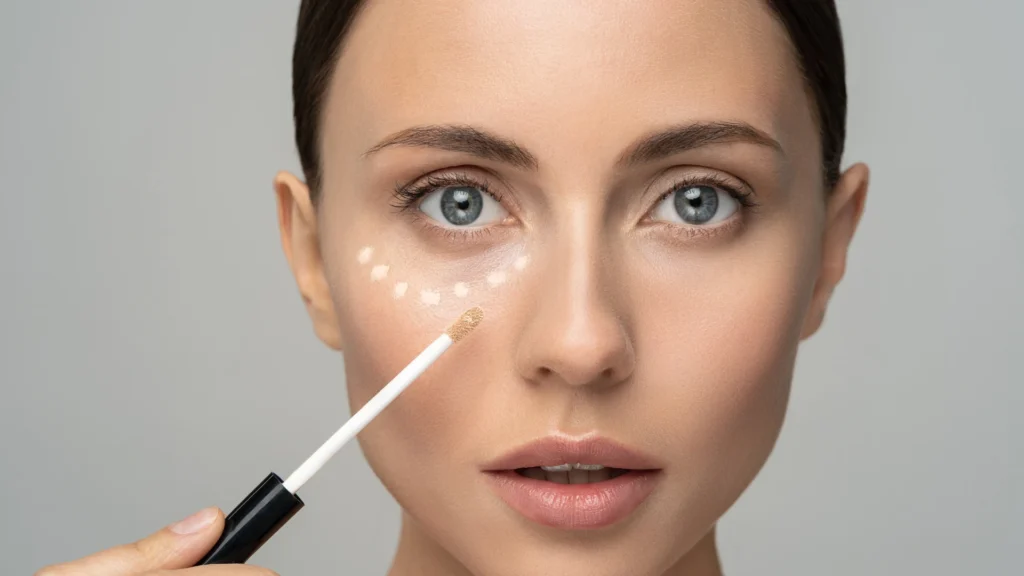
This is a sensitive area, and the skin around your eyes can easily become more prone to show signs of aging, puffiness, and dark circles before other areas do. Specially formulated eye creams should take care of these. The retinol application moisturizes, reduces puffiness, promotes brightening of the area around the circle of darkness, and acts to inhibit the formation of fine lines.
With gentle dabbing motion in the skin under your eyes, apply a small amount. That helps prevent over-working the skin under your eyes. If you use eye creams regularly, they will keep that area around your eyes looking fresh and young.
Benefits of Using Eye Cream
Targeted Treatment: Because eye creams target specific problems associated with the eye area, including puffiness, dark circles and crow’s feet, eye creams are considered treatment for eyes.
Hydration: Generally speaking eye creams contain hydrating elements. They help keep the moisture level on the skin, no dryness, no itchiness around the eyes.
Calming qualities: The eye creams are many and based on ingredients that could gently soothe the inflammation and redness such as chamomile or aloe vera.
Lightweight Formula: Since the skin around the eyes is delicate, the eye creams are normally light weight creams.
Key Ingredients
Targeted Treatment: Targeted treatment eye creams address issues of the eye area, such as puffiness, dark circles and crow’s feet, because they are eye creams.
Hydration: Almost all the eye creams have hydrating elements. They help in maintaining the moisture level in the skin; no dryness or itchiness in and around the eyes.
Calming qualities: An eye cream can include ingredients that could alleviate inflammation like chamomile or aloe vera, and make the skin less red.
Lightweight Formula: Normally, other moisturizers are heavier than eye creams, so they are better suited for the skin around the eyes as the skin is sensitive and delicate.
Eye Cream Tips
It is best to place a small drop of eye cream with your ring finger, as pulling this fragile skin will hurt. Soften up the facial features and get rid of the puffiness, circle shadows, and fine lines if you use it everyday.
Step 6: Moisturizer
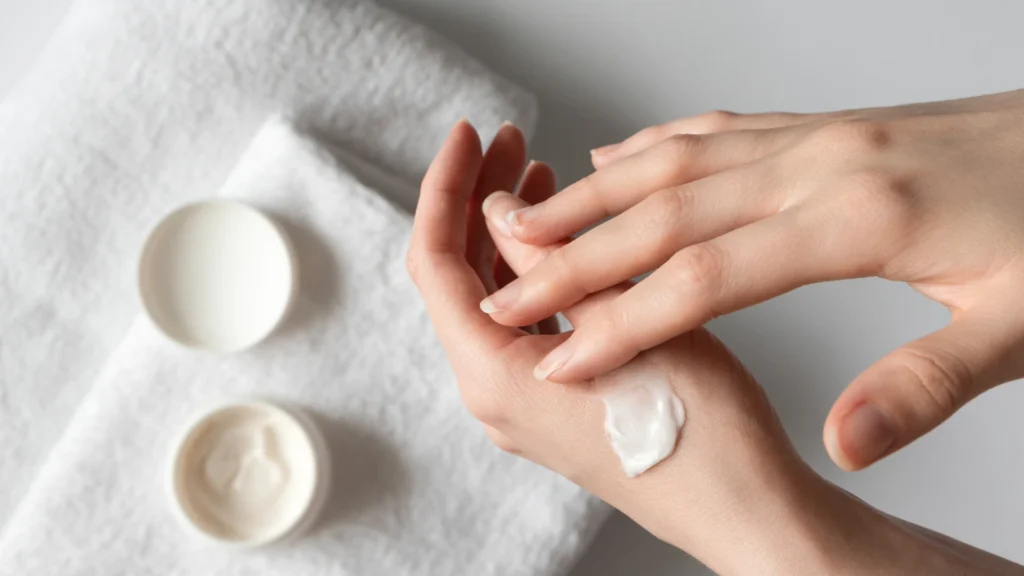
One of the most critical products in any skincare routine is moisturizers which moisturizes the skin and helps it hold onto moisture longer. Moisturizer forms a protective layer to make your skin moist and healthy.
Benefits of Using a Moisturizer
Skin hydrating and smooth.
It provides protection from dryness and irritation to the skin.
Key Ingredients
Hyaluronic Acid: Provide intense moisturization by absorbing moisture in the skin.
Glycerin: Hydrates only so that the skin can attract moisture with the help of the atmosphere.
Squalane: Hydrates well but doesn’t clog pores and is a very light oil.
Antioxidants: Environmental damage is protected by vitamin E or C.
Step 7: Sunscreen
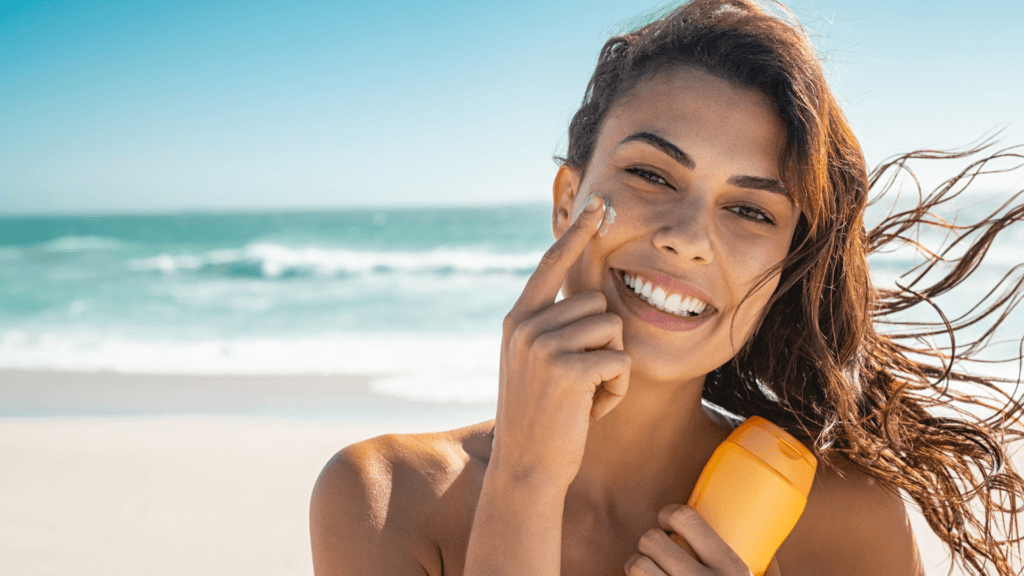
Sunscreen is a wonderful addition to morning skincare: preventing UV-rays from causing early aging, sunburn, and having a higher risk of skin cancer.
Benefits of Using Sunscreen
UV Protection: The later guards your skin from the destructive UVA and UVB rays.
It can help from premature aging and wrinkles, fine lines, and more age spots.
Reduces the risk of developing skin cancer: it delays the development of skin cancer.
Evens skin tone: It fights hyper pigmentation and uneven tone of the skin due to ultraviolet rays.
Key Ingredients
Hyaluronic Acid : Uses great water to draw it towards the skin to soak it to the deepest layer of the skin. Glycerin is also a humectant, and the type of materials that when applied externally on the skin will pull moisture from the surrounding environment.
Ceramides: Participate in the restoration of skin surface barrier damage when compromised and precludes water loss itself which increases with skin aging.
Squalane : It’s a very light, slippery oil from the skin. Thus it does not clog the pores The second argument of the arrays is that theзы It will lubricate your skin.
These also include those such as Vitamin E or C which acts as a shield to outer influence.
Step 8: Makeup Primer
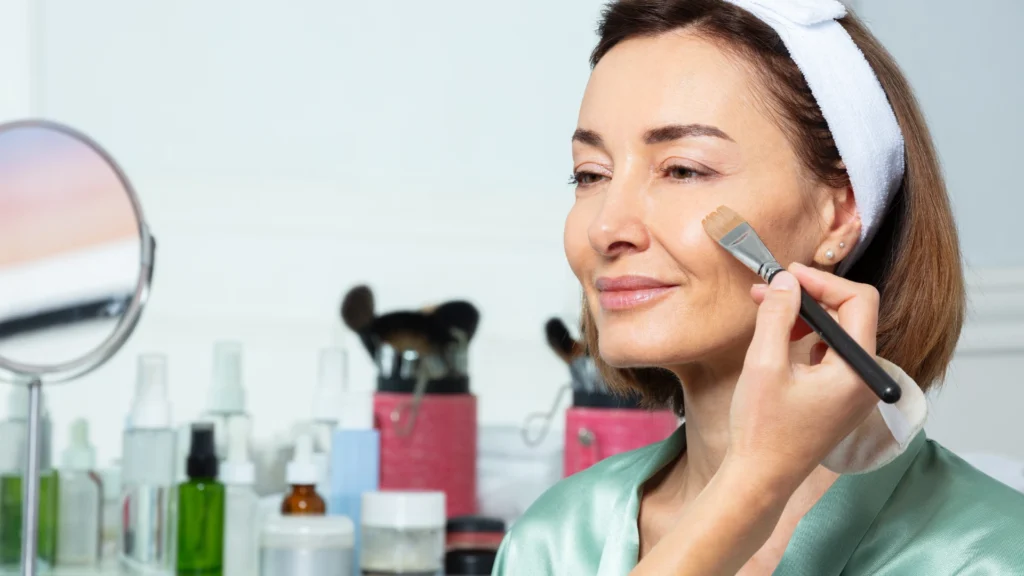
A makeup primer is one of those things you can do in the morning when preparing for the day, but it is most useful if you are applying makeup. It makes a very good surface to your foundation and helps with keeping it on for much longer.
Benefits of Using Makeup Primer
Smoother Application: Controls oil and sebum secretion to minimize shine and also covers fine lines and pores giving a good base for applying make up.
Increased Longevity: Strengthen skin so that makeup lasts for the whole day.
Oil Control: Soaks up the oiliness of your skin so you will be less shiny and greasy throughout the day.
Hydration: Has moisturizers which is perfect for people with dry skin.
Mattifying: Controls defines for a matte look perfect to use for oily complexion.
Key Ingredients
Hyaluronic Acid
Benefits: Absorbs and gets locked in for intense moisture.
Best For: Each type of skin, but it is especially beneficial for dry and dehydrated skin. Glycerin
Glycerin
Benefits: Affords to draw moisture from environment to social work for hydration of skin.
Best For: All and especially dry and sensitive skin. Ceramides
Ceramides
Benefits: Heals skin and makes it impermeable to loss of moisture.
Best For: For dry skin, sensitive skin or the skin that has been weakened by various factors. Retinol (Vitamin A)
Step 9:Lip Balm
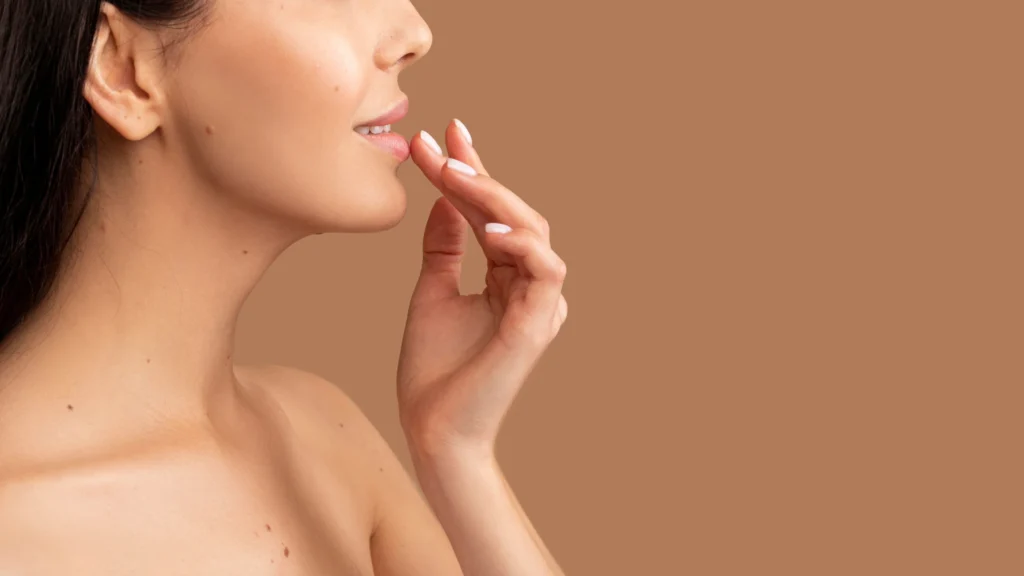
Lip balm is perhaps one of the most essential products for ensuring that those lips are always soft, healthy and moisturized. This act of a shield to the body against environmental factors and contribute [sic] to the prevention of dryness and chapping of the skin. Here’s how to include lip balm into your skincare routine
Benefits of Using Lip Balm
Hydration: Used for softening lips and making them free from cracks that result from dryness. Protection: Protects lips from vices of the weather such as wind and cold.
Soothing: This product include those ingredients that are used to sooth irritation and discomfort. Enhanced Appearance: Enhance the surface of lips and gives lips a healthy natural appearance.
Key Ingredients
Beeswax: Acts like a shield and seals in moisture.
Shea Butter: Effective moisturizing and supplying fatty acids for the lip area.
Coconut Oil: It forms on the lips a thin protective layer that makes lips softer and smoother and definitely more moist.
Vitamin E: Rebuilds damage skin tissues and shields skin against any potential harm
Peppermint Oil: Hydrates the skin and has the ability to give lips volume (do not apply on irritated skin).
Hyaluronic Acid: Moisturizing for it helps to keep the lips full and moist.
Does this work for you?
Evening Skincare Routine
Spot Treatment
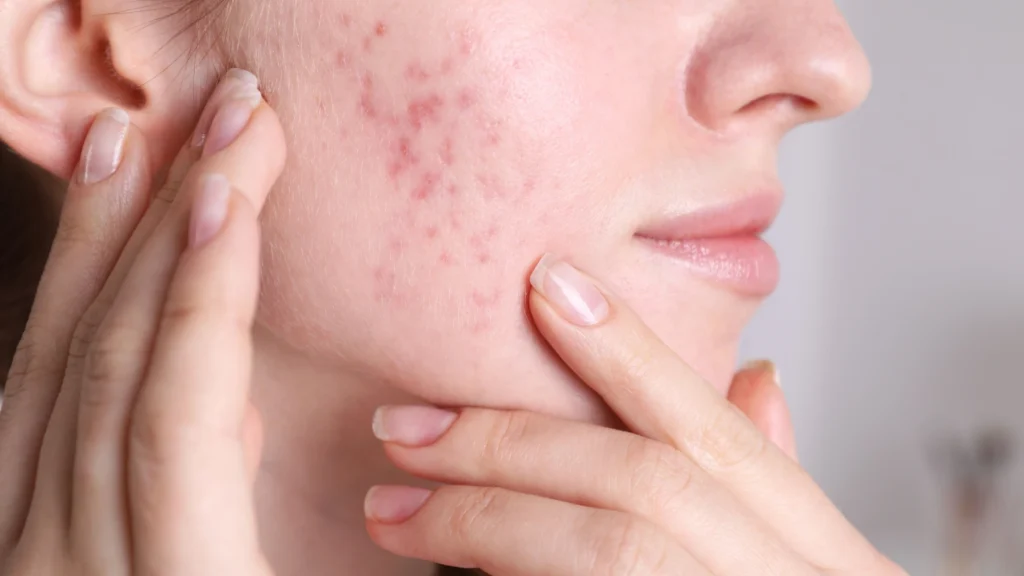
They are special depigmenting products that are applied with the intent to remove localized spots and imperfections, including pimples and such Skincare
Benefits of Using Spot Treatments
Targeted Action: Target problem zones with concentrated nutrient delivery systems and apply both actively and passively.
Fast Results: Developed to onset fast to minimize not just the size but the redness of blemishes as fast as possible.
Minimized Irritation: Used only where necessary to avoid reaction with adjacent skin.
Key Ingredients
Salicylic Acid: An acidic substance that includes BHA capacity to both, exfoliate as well as penetrate the skin pore, making it helpful for the treatment of current acne breakouts.
Benzoyl Peroxide: An organic compound effective in eradicating acne inflammation that is associated with bacterial infections best for inflammatory acne.
Tea Tree Oil: A natural substance with antibacterial capabilities that also works to calm skin inflammation and lessen redness and inflammation related to acne.
Sulfur: Soaks up excess oil and even has small antimicrobial activity, therefore is great for treating acne.
Face Oil
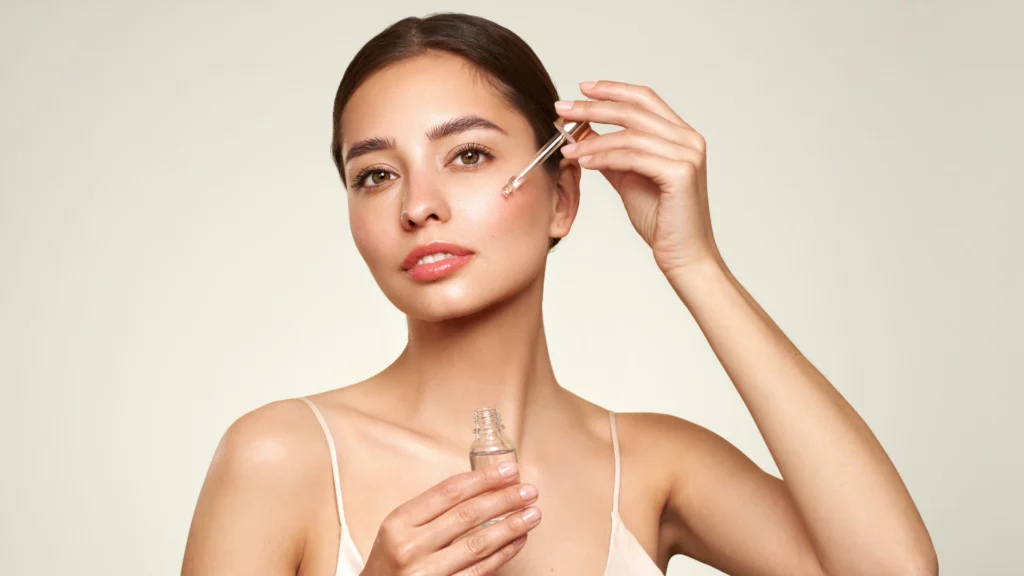
Self-care with face oils is great for your evening skincare routine, as oils enrich the skin with lots of moisture and nutrients. Essentially, body and hand creams can be advantageous to dry or dehydrated skin forms although most of the solutions can be applied to any skin form. Here’s how to effectively incorporate face oil into your routine
Benefits of Using Face Oil
Intense Hydration: Provides a barrier that reduces water loss making skin hydrated throughout the night. Nourishing Ingredients:
Loaded with vitamins, anti oxidants and essential fatty acids that help to hydrate and defend the skin. Improved Skin Barrier: Helps to rebuild skin’s natural protection which helps it to resist negative influence of external factors and irritations.
Key Ingredients
Jojoba Oil: Reproduces the skin’s natural oil – sebum- is gentle for all skin types and regulates oil secretion.
Argan Oil: The enzyme related antioxidant that is rich in vitamin E & essential fatty acids, moisturizes & nourishes besides enhancing elasticity.
Rosehip Oil: Has vitamins A and C, brightens skin, minimizes scaring and fine lines.
Marula Oil: Non-greasy, fast penetrating, moisturizer without the formation of acne, and contains anti-oxidants.
Squalane: Non-acnegenic, noncomedogenic, and moisturizes and helps the skin retain water.
Conclusion : The recommended procedure for morning care for oily skin is washing it with a foaming agent that will help exfoliate the skin and tone it with a light, non-oil-based moisturizer. Sunscreens should enhance protection by scaling the extent of UV risk coverage using a broad-spectrum option.
In turn, if one has dry skin then it would be good to use a creamy cleanser that would help to safeguard moisturized skin that you can protect with sunscreen That’s why it would be good to use a rich moisturizer after washing the face. This way, skin is well protected and nourished based on one’s skin type throughout the day they follow a routine.

Leave a Reply